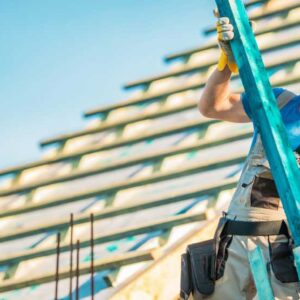One of the primary benefits of CCTV drain inspection is its ability to detect problems early. By using cameras to explore the inside of the drainage pipes, you can identify issues such as blockages, leaks, cracks, or root intrusions before they escalate into more significant problems.
CCTV cameras provide a clear and detailed view of the inside of the drain pipes, allowing for accurate assessment of their condition. This precision helps in identifying the exact location and nature of any issues, enabling targeted repairs or maintenance.
By detecting issues early through CCTV inspection allows for timely intervention, which can prevent minor drainage problems from developing into major issues. Addressing issues promptly often requires less extensive and costly repairs compared to dealing with significant damage or blockages.
To assist in keeping your drain running well and to ensure you can navigate any issues here is a guide to CCTV drain inspection…
Equipment Required
To carry out an effective CCTV drain inspection you will need to arm yourself with the correct equipment, namely:
Waterproof Camera – Your waterproof camera should be mounted on a flexible rod that is used to capture footage inside the drain pipes.
Monitor and Recording System – To view and record the footage obtained from the camera.
Lighting – LED lights are often attached to the camera to illuminate the inside of the pipes.
Locating Device – Optional, but helpful for accurately pinpointing the location of any issues detected.
Preparing for the Inspection
Preparing for a CCTV drain inspection involves several steps to ensure optimal conditions for conducting the inspection this requires ensuring that the drain is completely clear of obstructions to allow unimpeded movement of the CCTV camera:
Assessment of Drain Condition – If there are any visible blockages or debris near the drain entrance, remove them manually using appropriate tools.
Use a drain rod or auger to dislodge and remove any stubborn blockages further down the drain pipe.
Flushing the Drain – Use a high pressure water jet or drain flushing equipment to clear any remaining debris or sediment from the drain pipes.
Inspecting Drain Covers and Grates – Check the condition of drain covers, grates, or access points to ensure they are securely in place and free from damage. Additionally you should remove any covers or grates that may obstruct the insertion of the CCTV camera into the drain pipe.
The Inspection Process
The CCTV drain inspection process involves several steps to ensure a thorough examination of the drainage system. Here’s a detailed overview:
Preparation – Firstly, gather all necessary equipment, including the CCTV camera system, monitor, cables, and lighting equipment. Then ensure that the drainage system is accessible and that any necessary permits or permissions for inspection are obtained. Be sure to take safety precautions, such as wearing appropriate personal protective equipment (PPE) and setting up warning signs if inspection involves working in public areas.
Setup – Set up the CCTV camera system, which typically includes a high-resolution camera attached to a flexible cable or rod. Then connect the camera to a monitor or recording device to display and capture the footage. Ensure that you adjust the lighting equipment to ensure adequate illumination inside the drain pipes for clear visibility.
Insertion of Camera – Insert the CCTV camera into the drain pipe through an access point, such as a manhole or cleanout. Use a rod or cable system to manoeuvre the camera through the pipe, guiding it along the length of the drainage system.
Inspection – As the camera travels through the drain pipe, observe the live feed on the monitor to inspect the condition of the pipe interior. Paying close attention to any signs of damage, such as cracks, fractures, corrosion, or joint displacement. Also look for blockages, debris buildup, root intrusions, or any other obstructions that may impede the flow of wastewater.
Document, analyse and follow up – Document findings during the inspection process, by recording relevant information, such as pipe diameter, material, and depth, to aid in maintenance planning and decision-making. Identify priority areas for maintenance or repair based on the severity of issues detected.
Share your findings with relevant stakeholders, such as property owners, facility managers, or maintenance teams and ensure to schedule follow-up inspections as needed to monitor the effectiveness of repairs and track changes in the condition of the drainage system over time.
Regular Inspections and Maintenance
Scheduling regular CCTV drain inspections is a proactive approach to maintaining your drainage system. By regularly monitoring the condition of the drains using CCTV cameras, you can detect any issues early on, such as blockages, leaks, or structural damage.
This helps prevent more significant problems from developing and allows you to address issues promptly, saving you time and money in the long run. There are also specific events that may require additional inspections, such as:
After Extreme Weather Events – Following heavy rainfall, storms, or other extreme weather events, it’s essential to inspect the drains for any damage or blockages caused by the weather. Immediate post-event inspections can help prevent further damage.
Before and After Construction Projects – If there are any construction projects planned that might affect the drainage system, conduct inspections both before and after the project to ensure that the drains remain in good condition and are not impacted by the construction activities.
Emergency Inspections – Apart from scheduled inspections, always be prepared for emergency inspections in case of sudden issues like severe blockages or suspected damage. A prompt response to such situations can minimise potential damage and disruption.
Remember to document all findings from each inspection, including any issues discovered and the actions taken to address them. This documentation can help track the condition of the drainage system over time and inform future maintenance decisions.
Detecting issues early through CCTV inspection allows for timely intervention, which can prevent minor problems from developing into major issues. Addressing issues promptly often requires less extensive and costly repairs compared to dealing with significant damage or blockages.
While traditional methods of inspecting drains, such as excavation, can be disruptive and time-consuming. CCTV drain inspection eliminates the need for extensive digging or excavation, minimising disruption to surrounding areas and reducing the time required for inspection and maintenance activities.
Regular CCTV drain inspections facilitate preventive maintenance efforts. By proactively monitoring the condition of the drainage system, you can implement preventive measures to extend the lifespan of the pipes, minimise the risk of failures, and avoid unexpected disruptions to drainage operations.
So, as you can see CCTV drain inspection is a valuable tool for maintaining the integrity and functionality of drainage systems, providing a cost-effective and efficient method for identifying and addressing potential problems.





